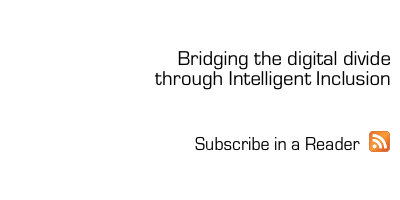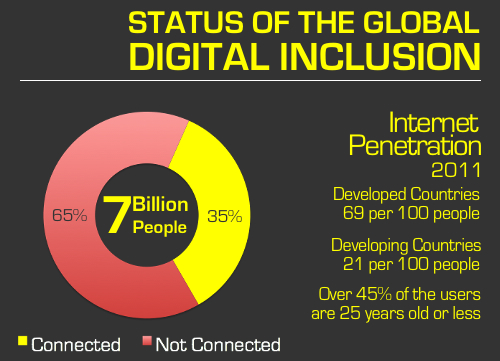Even though several governments did a nice effort over the last 10 years pushing the Internet in several countries, the numbers are far from satisfactory. Almost 65% of the global population is excluded from the Web, over 4.5 billion people.
From the infographic below we can extract a few intriguing trends and analyses. Internet penetration over 90% occurs only in 6 countries, increasing to 22 if we consider the penetration over 80%.
 A fascinating fact is that some countries that are recognized by their technology, and especially, digital capabilities like USA, Israel, Singapore, and others, have not yet achieved 80% of penetration. While it is easy to explain that lower income areas have lower penetration, the fact that countries like Italy, Spain, and Hong Kong have less than 70% penetration is a proof that the issue is not only cost related.
A fascinating fact is that some countries that are recognized by their technology, and especially, digital capabilities like USA, Israel, Singapore, and others, have not yet achieved 80% of penetration. While it is easy to explain that lower income areas have lower penetration, the fact that countries like Italy, Spain, and Hong Kong have less than 70% penetration is a proof that the issue is not only cost related.
According to a McKinsey study, the Internet in advanced economies accounted for 10 percent of GDP growth over the past 15 years, totaling today 3.4% of GDP in 2009. This reinforces my beliefs that governments, NGOs and the private sector should join forces to address the issues that are preventing a wider adoption. A compelling example is the comparison of the world’s two most populous countries, India and China, with totally different stories. China has been aggressively pushing for adoption of the Internet, and the efforts paid off: over 450 million Chinese we connected in 2010. In India, though, the number is much smaller: 87 million people. Just for comparison, Brazil had over 81 million people connected at the same time.
So, what do you think?
Best Regards,
Caetano Notari
Recommended reading:
Why is digital inclusion necessary: a brief introduction to the importance of digital inclusion



{ 2 comments… read them below or add one }
Hello Caetano.
First of all, I would like to congratulate you for this excellent blog.
I am afraid that in the case of developed countries that have 70%, 80% of penetration, they still have a lot of people that think they just don’t need internet, they prefer do things old fashioned way.
Most people is naturally against change. Even the mainstream culture moving towards digital culture, for example, some TV program gives additional content on their website, or calls viewers to discuss some subject on a social network, many people still prefer to call, or to ask a relative to send an email, because they don’t want to change their lifestyle, think it is too difficult, etc.
This is my opinion based on my everyday observation.
Regards,
Emilio
Hi Emilio,
Thanks for your input. I agree with you, there are large segments of the population that do not see the benefits of connecting yet. We have to learn more about them, identify the key issues that are blocking them from using the services.
BR, Caetano
You must log in to post a comment.
{ 9 trackbacks }